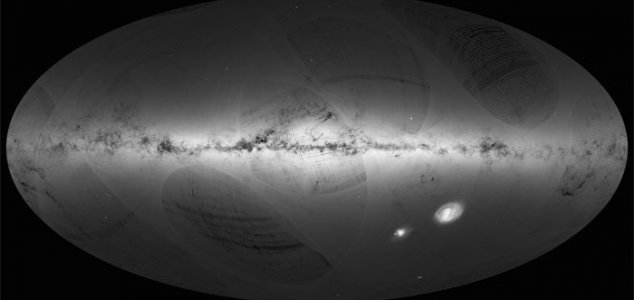
The Milky Way is the galaxy that contains our Solar System. Its name “milky” is derived from its appearance as a dim glowing band arching across the night sky whose individual stars cannot be distinguished by the naked eye. The term “Milky Way” is a translation of the Latin via lactea, from the Greek .From Earth, the Milky Way appears as a band because its disk-shaped structure is viewed from within. Galileo Galilei first resolved the band of light into individual stars with his telescope in 1610. Until the early 1920s, most astronomers thought that the Milky Way contained all the stars in the Universe. Following the 1920 Great Debate between the astronomers Harlow Shapley and Heber Curtis, observations by Edwin Hubble showed that the Milky Way is just one of many galaxies—now estimated to number as many as 200 billion galaxies in the observable universe.
The Milky Way appears to be much larger than previously thought.
The European Space Agency has unveiled a map of our galaxy charting the positions of 1.1 billion stars.
The breathtaking and highly detailed 3D map was produced using data from ESA’s Gaia space observatory which has been scanning the heavens since its launch back in 2013.
Equipped with a 1 billion-pixel camera capable of measuring the diameter of a single human hair from over 1,000km away, the spacecraft is able to map the galaxy in more detail than ever before.
The new map includes 400 million stars that were previously unknown to science and nearly 20 times as many stars as the previous map created using ESA’s Hipparcos satellite in the 1990s.
“The beautiful map we are publishing today shows the density of stars measured by Gaia across the entire sky, and confirms that it collected superb data during its first year of operations,” said Gaia project scientist Timo Prusti.
“Although the current data are preliminary, we wanted to make them available for the astronomical community to use as soon as possible.”
A high-resolution version of the new galactic map can be downloaded
Originally posted 2016-09-16 14:08:10. Republished by Blog Post Promoter











